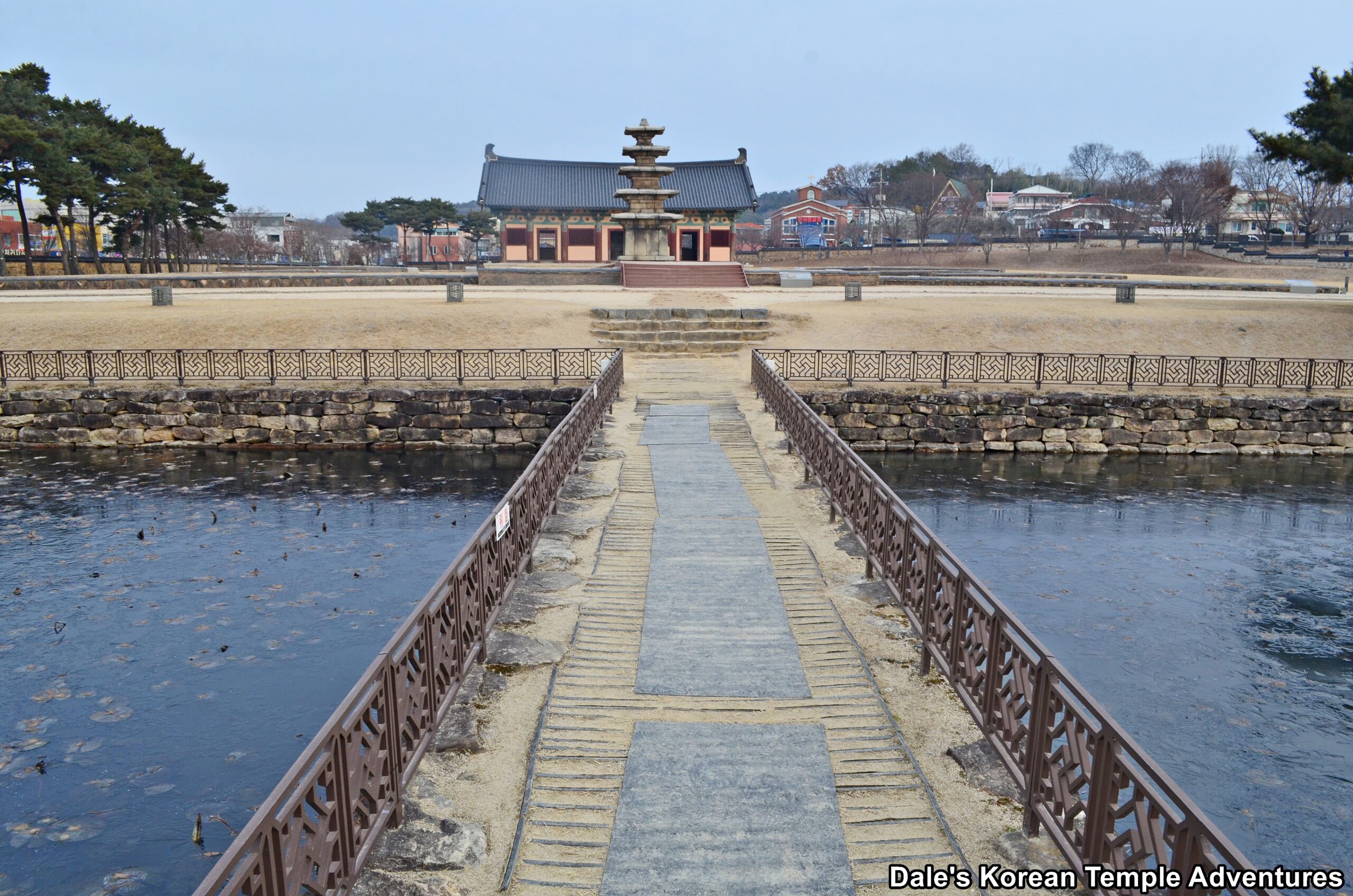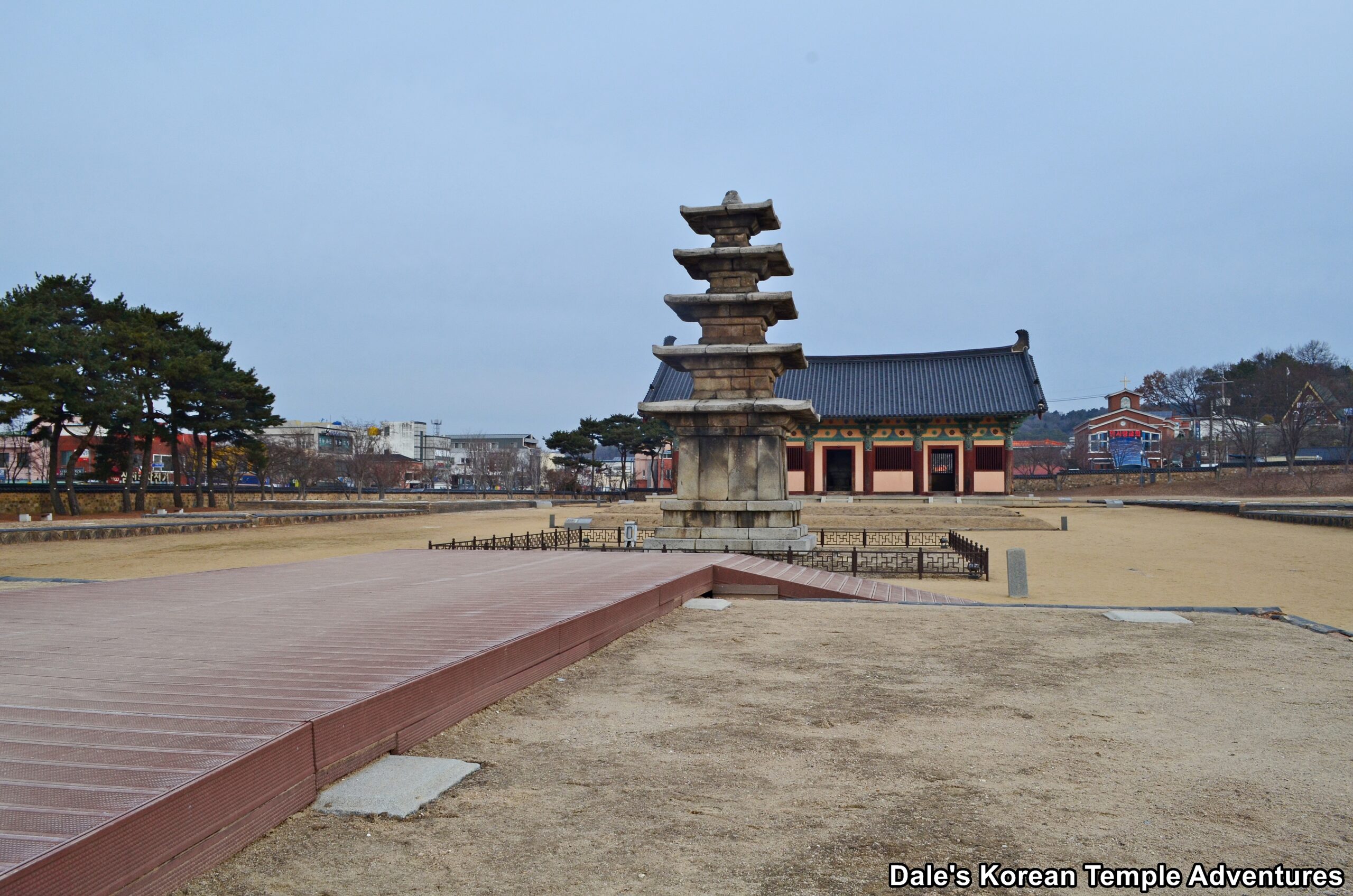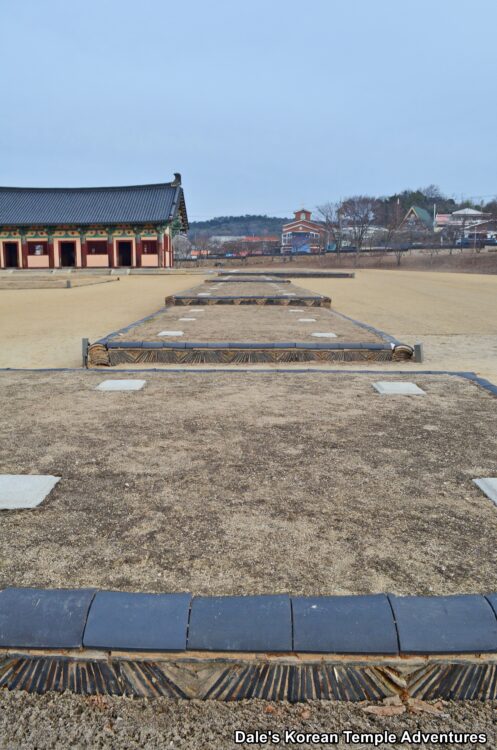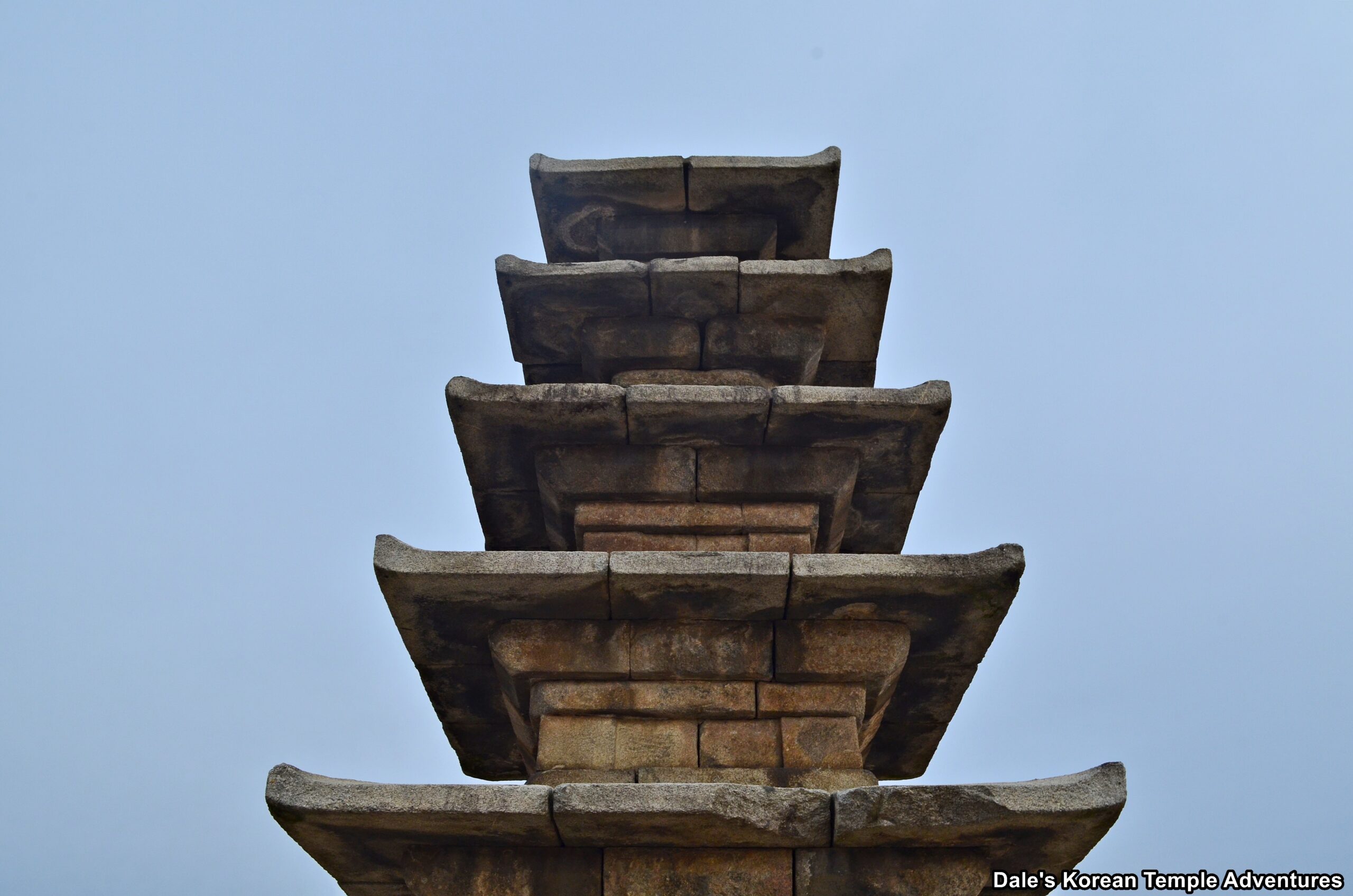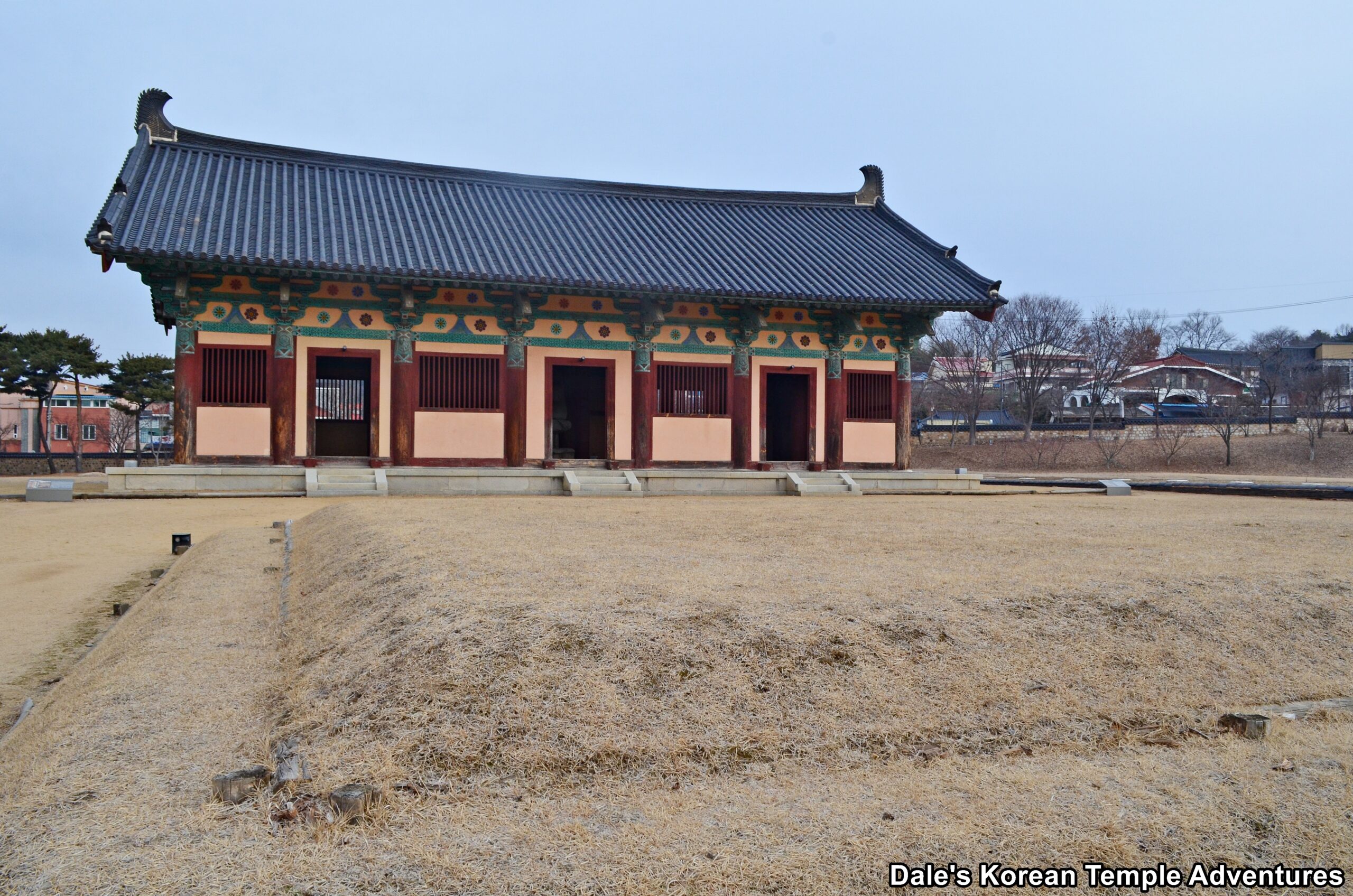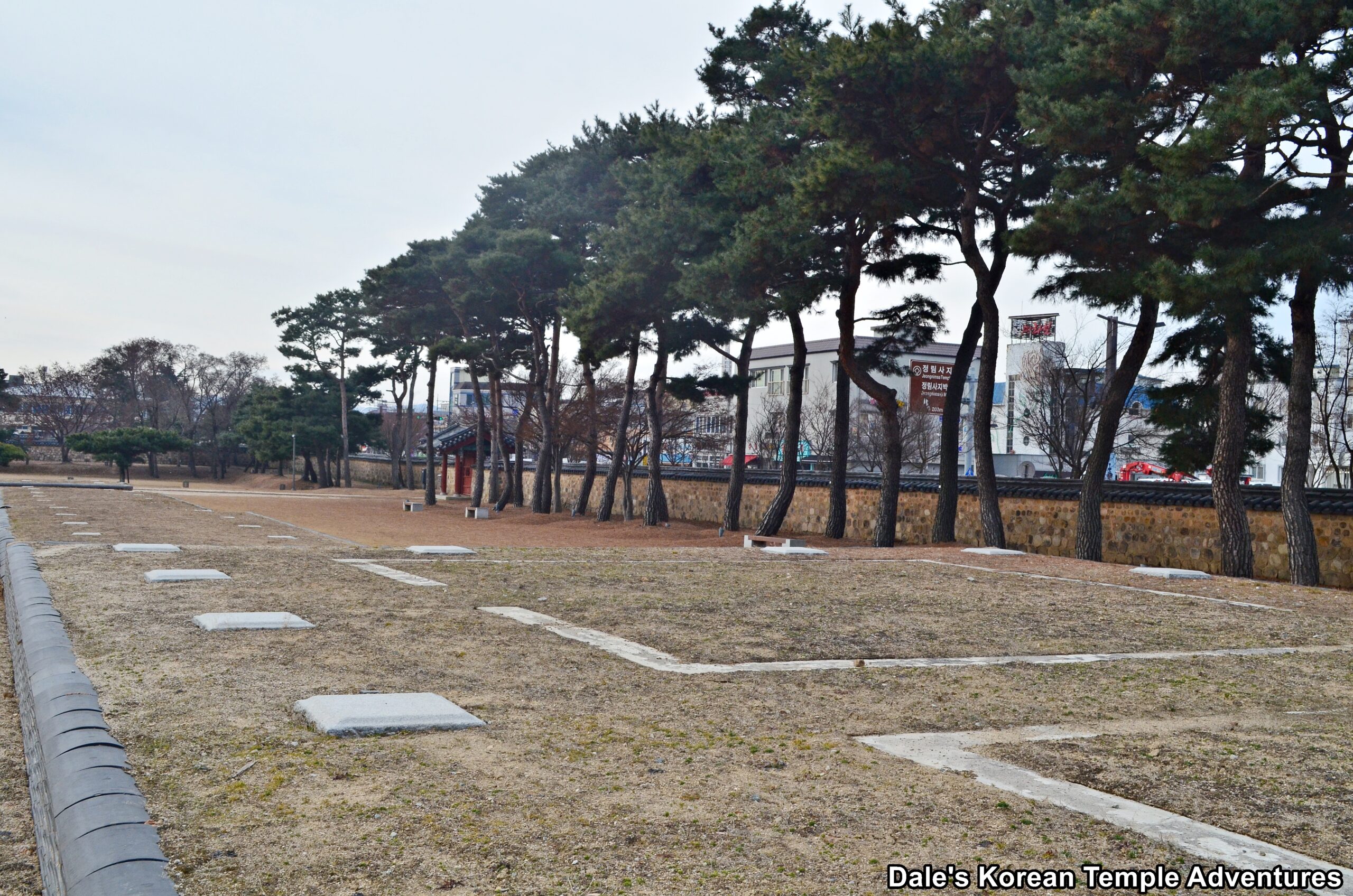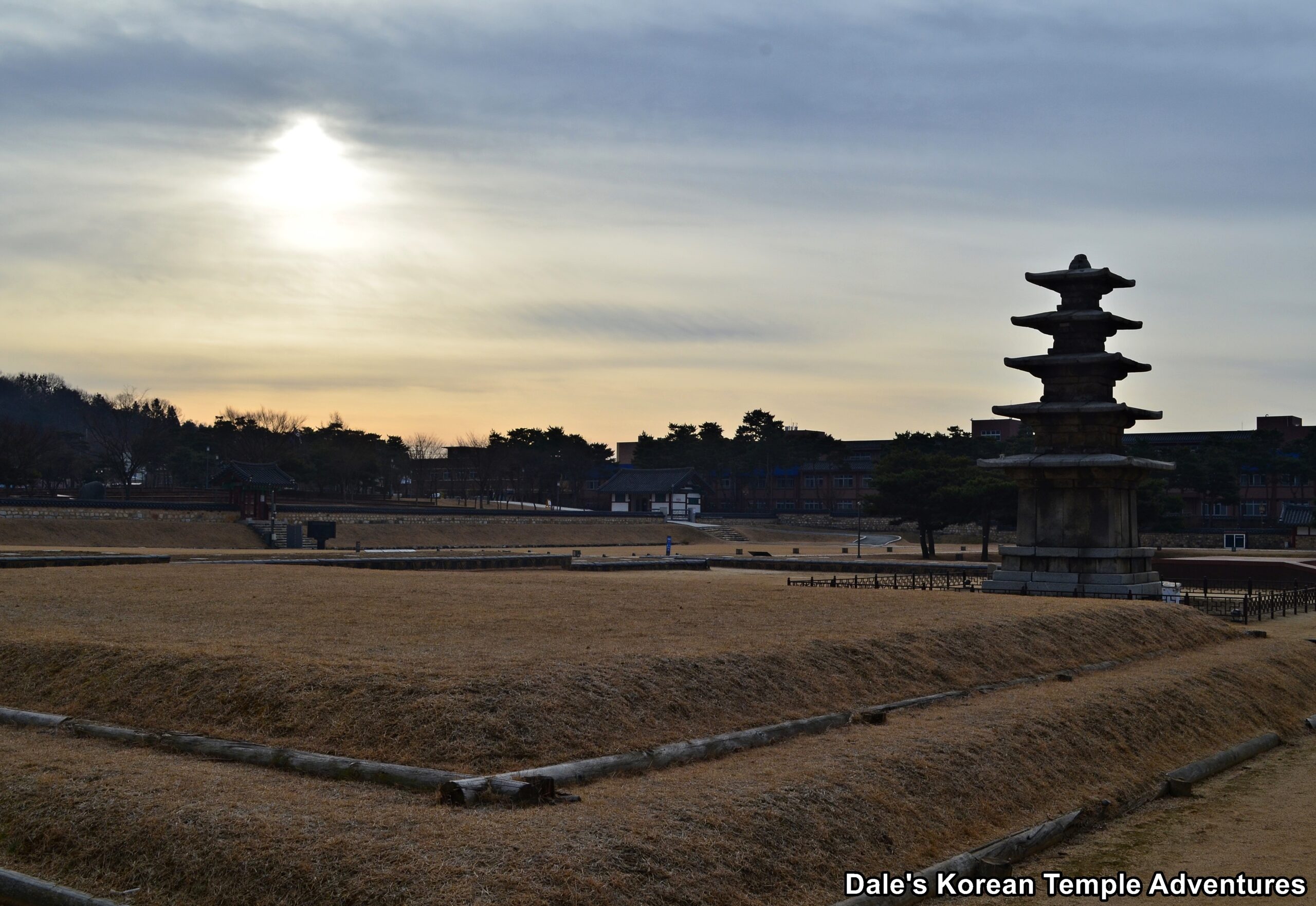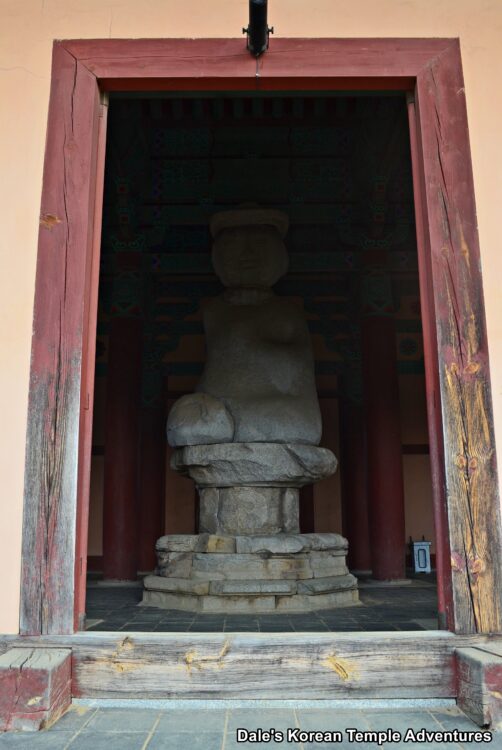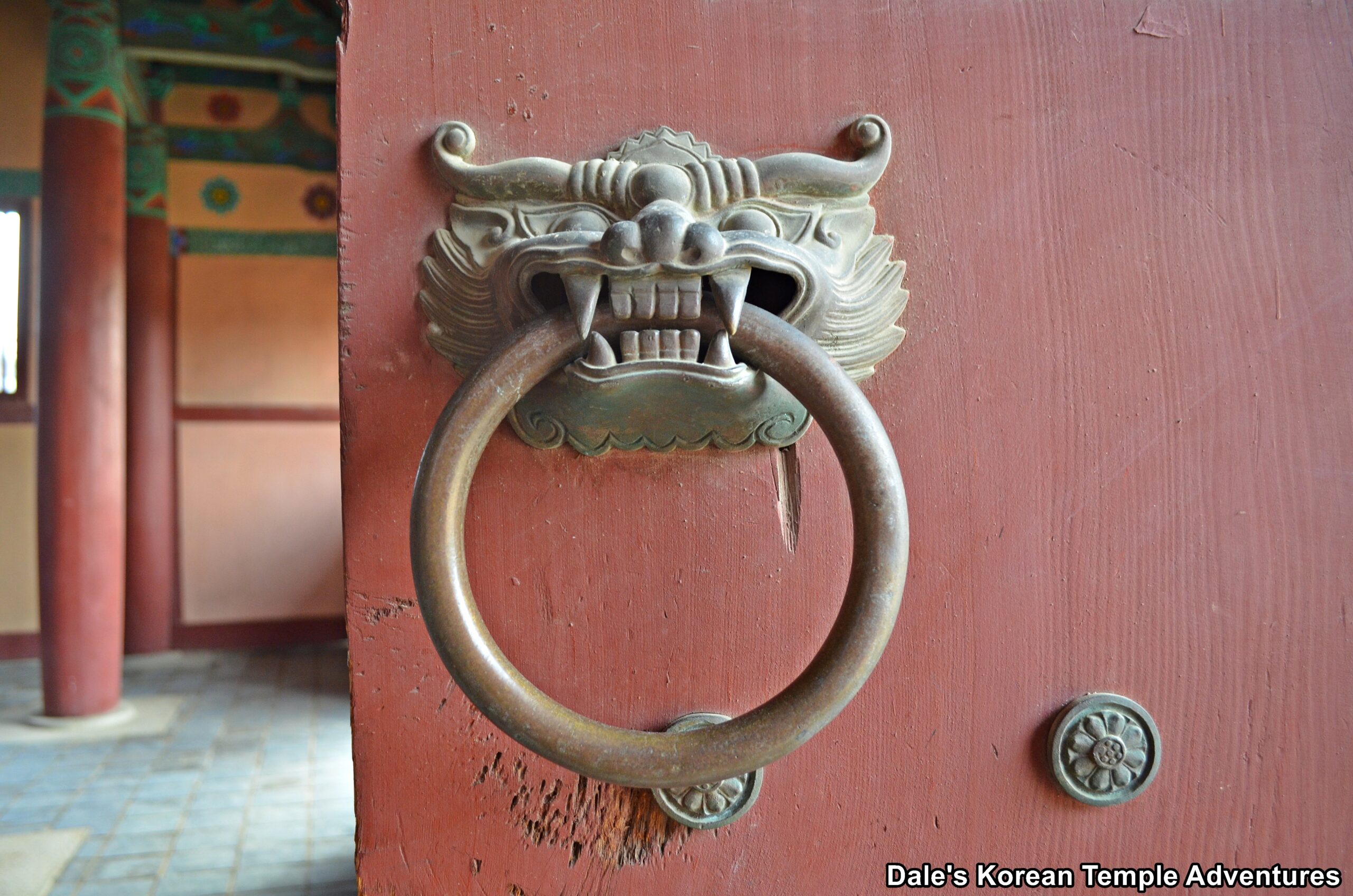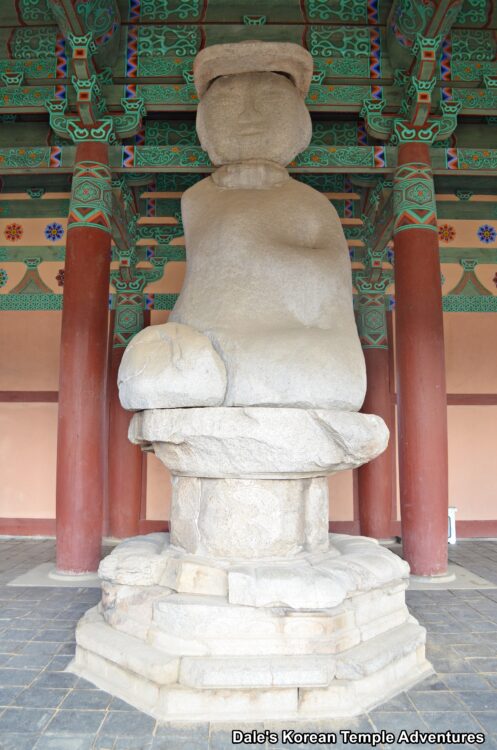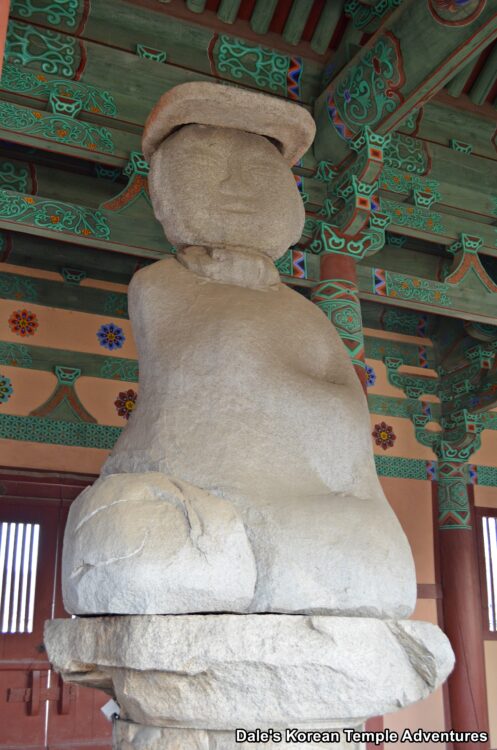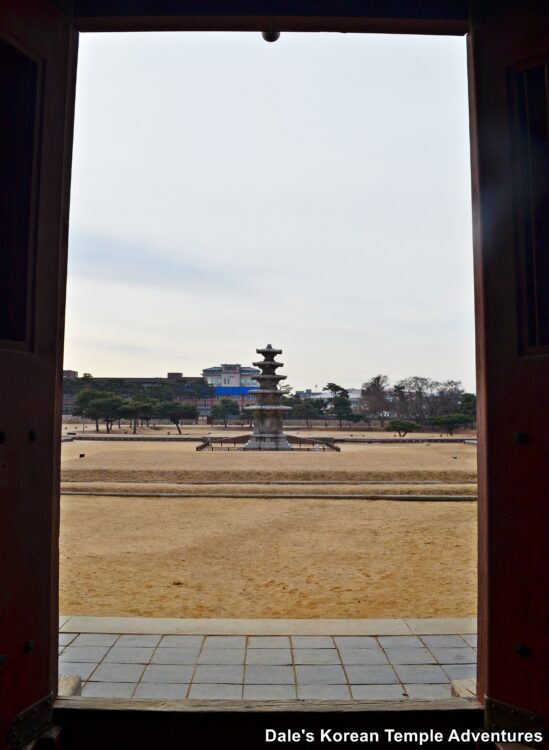Jeongnimsa-ji Temple Site – 정림사지 (Buyeo, Chungcheongnam-do)
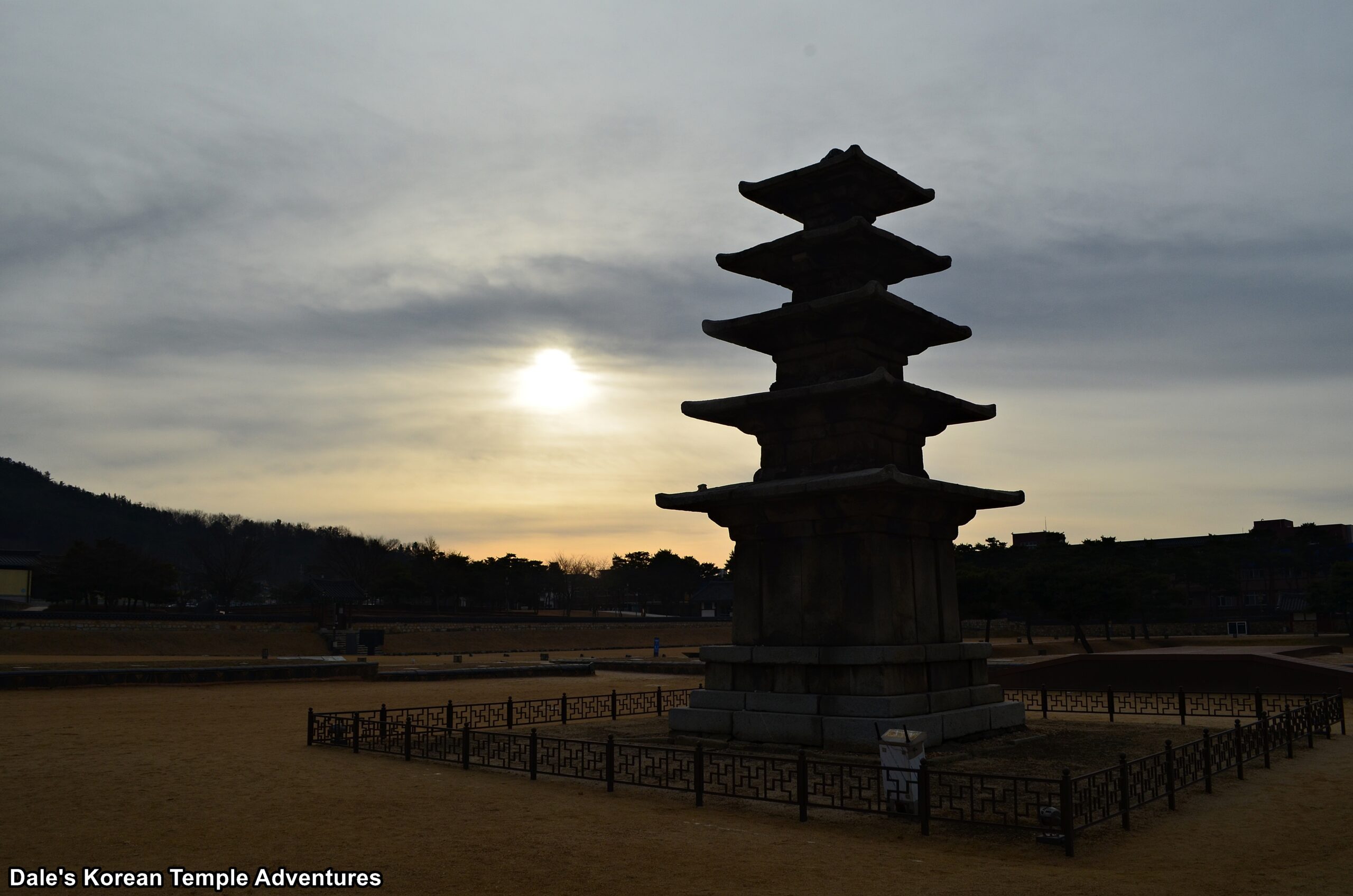
Temple Site History
The Jeongnimsa-ji Temple Site is located in central Buyeo, Chungcheongnam-do. The Jeongnimsa-ji Temple Site was located at the centre of Sabi (modern-day Buyeo), when the Baekje Kingdom (18 B.C. – 660 A.D.) capital moved from Ungjin (modern-day Gongju) in the spring of 538 A.D. Sabi was the capital of the Baekje Kingdom from 538 to 660 A.D. until the fall of the kingdom. When the capital was moved, King Seong of Baekje (r. 523-554) had Sabi divided into five parts which included the north, south, east, west, and central part of the city. The royal Baekje palace was located in the northernmost part of the capital, while Jeongnimsa Temple was located right in the centre of the ancient capital of the Baekje Kingdom. And the entire capital of Sabi was surrounded by two layers of defence. The outer layer of defence was the Busosan Fortress, which guarded the capital from the side where the nearby mountains left open. The inner defence was the Naseong City Wall, which encircled the entire capital.
The first excavation of the Jeongnimsa-ji Temple Site took place from 1942 to 1943 during Japanese Colonial Rule (1910-45) by Japanese Kazuo Fujisawa. During this dig, an inscription that read “8th year of Taepyeong, Mujin Jeongnimsa Temple Daejangdangcho” was discovered on a piece of tile from the lecture hall site. From this inscription a few things can be discerned; first, the 8th year of Taepyeong corresponds to the year 1028, which was when King Hyeongjong of Goryeo (r. 1009-1031) reigned. It’s from this excavation that the temple and temple site became known as the Jeongnimsa-ji Temple Site.
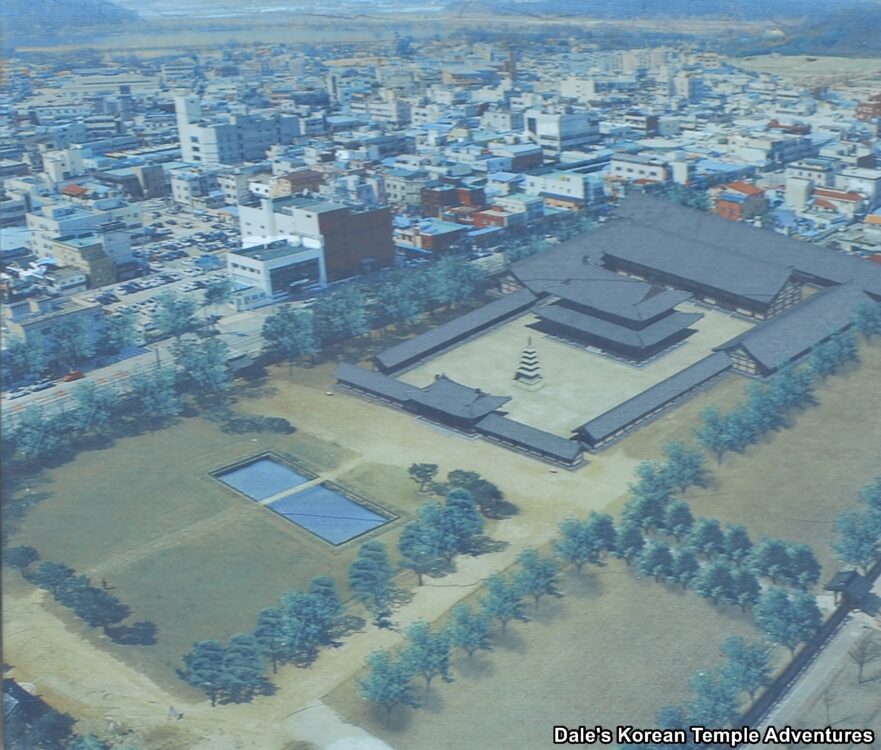
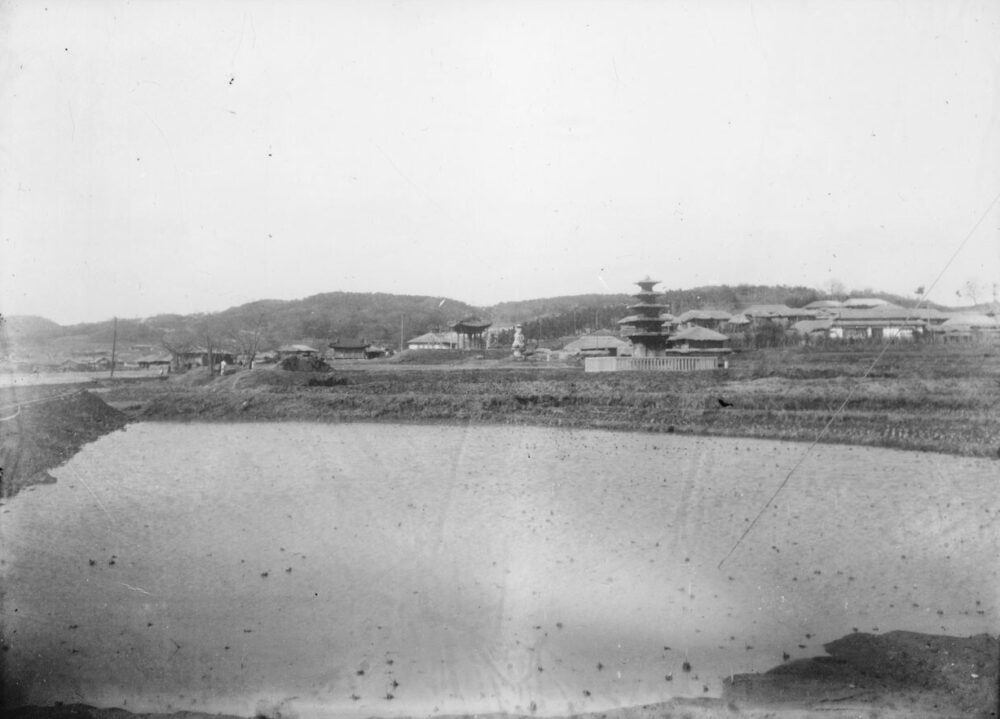
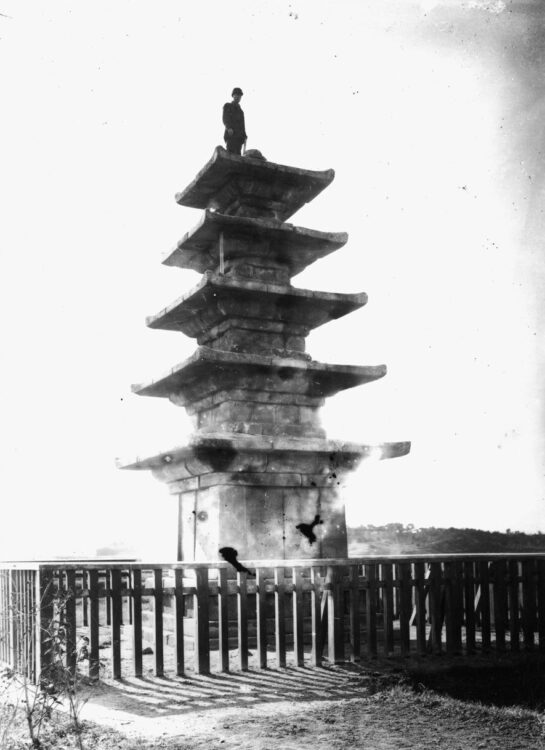
In 1979 and 1980, a full-scale excavation took place at the temple site by the Chungnam National University Museum. It was at this time that the size and arrangement of the temple were discovered. And that the 1028 former date of the temple’s founding was in fact a rebuild. A number of statues, roof tiles, and pottery from the Baekje Kingdom and Goryeo Dynasty (918-1392) were discovered at this time. This excavation was followed-up by the Buyeo National Research Institute of Cultural Heritage from 2008 to 2010, when they rediscovered the entire temple complex that now included the east-west ascension at the northern end of the corridor and the northern seungbang area behind the auditorium site.
According to more recent archaeological work and investigation, and according to the “Reconsideration of the Construction Period of the Jeongnimsaji Temple Site” by Kyung-Baek Tahk, Jeongnimsa Temple was first built after the capital moved from Gongju to Buyeo. This is confirmed by the work he has done by conducting palemagnetic (the study of magnetic fields recorded in rocks, sediment, or archaeological materials) analysis. This analysis was conducted on the fireplace at the bottom of the Jungmun-ji Gate (Middle Gate Site) that was recently discovered. From this analysis, it’s believed that the temple was built around 625 A.D. (give or take 20 years on either side of this year). Previously, the founding of the temple was based upon the arrangement of the auxiliary buildings. But it’s hard to determine exactly when a temple was first founded based upon the arrangement of buildings, since these buildings can be relocated during a temple’s lengthy history. That’s why the discovery of the fireplace is so important to better understanding the history and founding of Jeongnimsa Temple. Another interesting discovery was made at the Jeongnimsa-ji Temple Site by using the fireplace soil as a benchmark for exploring the soil at other sites in and around the temple site like the Five-Story Stone Pagoda at Jeongnimsa Temple Site. By comparing the soil at both sites at the Jeongnimsa-ji Temple Site, it was discovered that the current Five-Story Stone Pagoda at Jeongnimsa Temple Site was built upon the foundation for an older wooden pagoda. All this changes the former belief that the temple was built in the late 500’s. Now, it looks as though the temple was built a little later than previously thought.
In total, the Jeongnimsa-ji Temple Site is home to the Five-Story Stone Pagoda at Jeongnimsa Temple Site, which is National Treasure #9; the Stone Seated Buddha at Jeongnimsa Temple Site, which is Korean Treasure #108; and the Jeongnimsa-ji Temple Site is Historic Site #301.
Admission to the Jeongnimsa-ji Temple Site is: adults 1,500 won – teenagers 900 won – children 700 won
Temple Site Layout
You first approach the temple site from the south. After paying your admission fee and passing through the entry gate, you’ll find the pond off in the distance. The beautiful rectangular pond frames the temple site grounds which run north to south in a straight line. About 50 metres beyond the temple site pond is the Jungmun-ji Gate (Middle Gate Site). The elevated foundation’s size would have supported a gate structure that measured 11.3 m in length and 5.3 m in width. The foundation of this Goryeo-era entry gate was made using trimmed stones.
Beyond the Jungmun-ji Gate by some 14 metres is the Five-Story Stone Pagoda at Jeongnimsa Temple Site. The Baekje-era five-story pagoda stands atop a single narrow foundation platform. Stone pillars are fixed to the middle and corners of each side of the platform. There are large cut brick stones between the roof stones. As for the roof stones, they are both thin and quite wide. Additionally, the roof stones raise at each corner of the five-story structure. Interestingly, the pagoda has a similar look and feel to that of a wooden pagoda. This pagoda and the Stone Pagoda at Mireuksa Temple Site in Iksan, Jeollabuk-do are the only two extant Baekje Kingdom pagodas that still stand to this date.
Also rather interestingly, when the Baekje Kingdom was defeated by the combined military forces of Tang China (618–690, 705–907 A.D.) and the Silla Kingdom (57 B.C. – 935 A.D.) and annexed by Tang China in 660, the Baekje Kingdom was divided into five military administered regions (to which the Silla Kingdom reticently assented). The Tang general, Gen. Su Dingfang (591-667 A.D.), or Gen. So Jeongbang in Korean, made an inscription on the foundation of the pagoda. In this inscription, written in Chinese characters, Gen. Su Dingfang wrote “a monument for the conquest of Baekje.” Afterwards, the pagoda was known for a long time as the “Pyeongje-tap,” which means “A pagoda for conquering Baekje” because of what Gen. Su Dingfang wrote. This inscription, which can still be seen to this day, is a very important source in the study of Korean history.
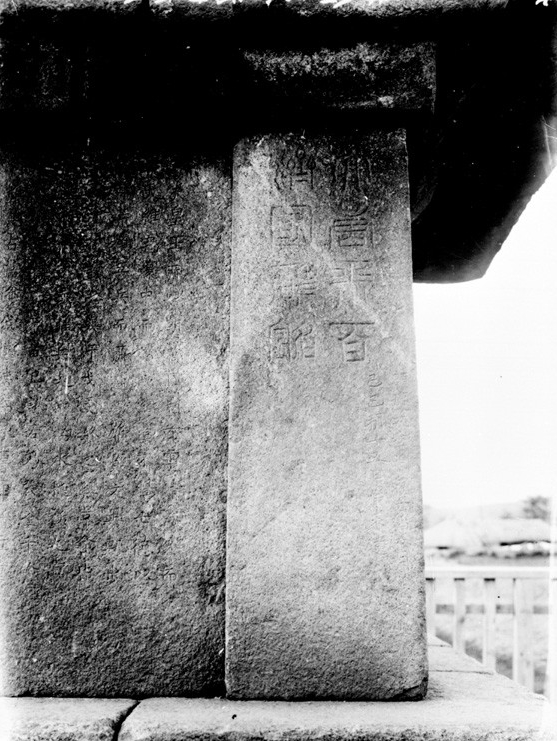
To the left and right of the Five-Story Stone Pagoda at Jeongnimsa Temple Site are the West-Side Building Site and the East-Side Building Sites, as well as corridors travelling from the Jungmun-ji Gate up to the either side of the Geumdang-ji (Main Hall Site). Both corridors that run north to south measure about 50 metres in length and stop at the West-Side Building Site and the East-Side Building Site. Both of these adjoining building sites measure 39.3 metres long and 12.1 metres wide. They were probably used as monks’ dorms and auxiliary buildings. Both sites were severely damaged. And it was at both of these sites that roof tiles were discovered.
Between the corridor foundations and the foundations for the building sites, and beyond the Five-Story Stone Pagoda at Jeongnimsa Temple Site, is the Geumdang-ji (Main Hall Site). This elevated foundation for the main hall is situated at the centre of the temple site grounds. Inside this main hall would have been a statue of the Buddha. The original Baekje-era platform was re-used for the Goryeo-era reconstruction of the structure. In total, and based upon its foundation, it’s believed that the main hall measured 18.75 metres long and 13.8 metres wide.
The final thing that visitors can explore, and which is now housed inside a large wooden hall, is the Stone Seated Buddha at Jeongnimsa Temple Site. Stepping inside the wooden hall, you’ll find the stone seated Buddha looking southward towards the Five-Story Stone Pagoda at the Jeongnimsa Temple Site. The stone statue was originally built during the Goryeo Dynasty (918-1392), after Jeongnimsa Temple was destroyed and then later resurrected to grow prosperous, once more. And the greatest indication of this prosperity, in part, is the construction of the Stone Seated Buddha at Jeongnimsa Temple Site. The head and crown of the statue aren’t original, but were later added. The details of the body are hard to define as they have been severely damaged. However, with that being said, the statue does appear to be an image of Birojana-bul (The Buddha of Cosmic Energy) since the right hand seems to be holding the index finger of the left hand. The large statue of the Buddha sits on an octagonal three-story pedestal. The top story of the pedestal looks like a lotus flower in full bloom. The second story of the pedestal, which is largely damaged, has large panels for decoration reliefs. And the bottom story of the pedestal is shaped like an upside-down lotus flower. The current location of the Stone Seated Buddha at Jeongnimsa Temple Site was the former location for the lecture hall at Jeongnimsa Temple. And perhaps most interesting of hall is that the refined tiles found at this site point to the fact that this Buddha was probably the main Buddha statue inside the Goryeo-era main hall that was reconstructed at this time.
It should be noted that east of the temple site grounds is the Jeongnimsa-ji Museum, which is also worth a visit.
How To Get There
To get to the Jeongnimsa-ji Temple Site from the Buyeo Intercity Bus Terminal, you can simply walk. You’ll need to walk east from the terminal and cross over Sabi-ro – 사비로, which is a large multi-lane road. You’ll need to continue past Jungang-ro – 중앙로 road. In total, this eastward walk should be about 100 metres. Finally, you’ll need to head south down the Seoktap-ro – 석탑로 road for about 100 metres. It’s from here that you’ll see the Jeongnimsa-ji Temple grounds. The admission area is located in the southern part of the grounds. At most, the walk should take you 10 minutes over 300 metres.
But if you’d rather take a taxi from the Buyeo Intercity Bus Terminal, you can. The ride will only take 3 minutes, and it’ll cost you around 3,300 won.
Overall Rating: 7/10
The Jeongnimsa-ji Temple Site is well preserved and maintained in downtown Buyeo, Chungcheongnam-do. The obvious highlight, which also just so happens to be a National Treasure, is the Five-Story Stone Pagoda at Jeongnimsa Temple Site. This is only one of two extant Baekje-era pagodas still standing in Korea. In addition to this beautiful pagoda is the accompanying Stone Seated Buddha at Jeongnimsa Temple Site, which highlights the history and resurrection of an integral temple to both the Baekje Kingdom and Goryeo Dynasty. The overall atmosphere at the Jeongnimsa-ji Temple Site is beautifully serene.
